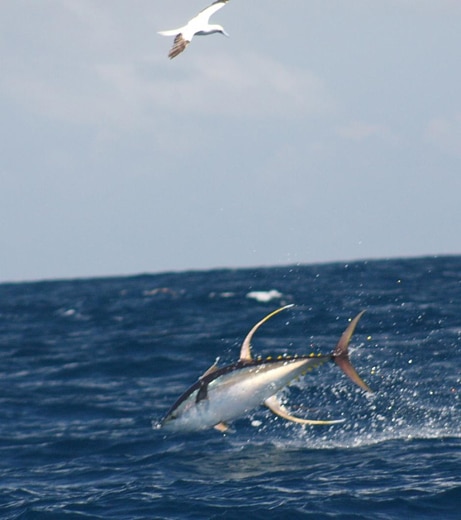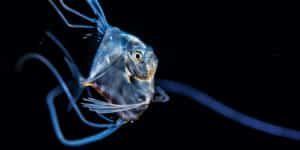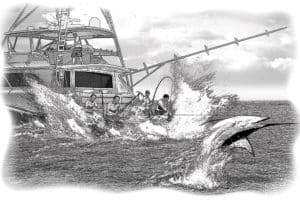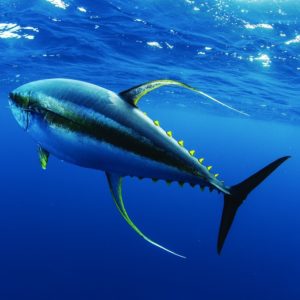
New Study Indicates Why Yellowfin Hang with Porpoise
For decades, recreational and commercial fishermen have exploited the unique relationship between yellowfin tuna and certain species of porpoise (aka dolphin) in the Eastern Pacific. Schools of yellowfin swim with pods of spotted dolphin and spinner dolphin in the tropics, as well as Pacific common dolphin and white-sided dolphin as far north as Southern California in warmer months. Commercial fishermen look for the dolphin and then wrap up the pod with purse seines to capture the schooling tuna below, sometimes killing dolphin in the process. Recreational fishermen troll lures or put baits in front of the pod to catch yellowfin.
Most anglers, including me, have always believed that the relationship was born out of the search for food, though no one knew if the porpoise were leading the tuna to food or vice versa. However, recently published research indicates that the tuna follow the dolphin, but food is not the primary reason.
A new scientific paper by Michael Scott, a co-founder of the Sarasota Dolphin Research Program and a senior scientist at the Inter-American Tropical Tuna Commission, states, “One or both species likely gain protection from predators (such as large sharks) by forming large, mixed-species groups.”
The benefits of the association are not based on feeding advantages, the paper reveals. “The dolphins and tuna tend to feed at different depths, at different times, and often on different prey,” Scott says.
Scott’s research also indicates that yellowfin tuna swim with porpoises only when oceanographic conditions are just right and only during the day. In the tropical Eastern Pacfic, for example. the thermocline is often fairly close (within 30 to 150 feet) to the warm mixed layer near the ocean surface, the study indicates, and these are the conditions that promote an association between dolphin and tuna.
“The tuna-dolphin association appears to primarily form during the daytime,” the paper states. The tracking and food habits studies showed that spotted dolphins typically dive deep to feed on fishes and squids at night, but travel just 15-20 meters below the surface during the day. The yellowfin tuna swim deeper, near the thermocline, during the day, the study indicates. “When the thermocline deepens, the vertical distance between the yellowfin tuna and the dolphins becomes too great to maintain the association,” Scott writes.
So, how does this help anglers? For one, it says that locating the thermocline is critical when fishing “porpoise schools,” as it is known by Southern California offshore fishermen. You can find the thermocline with a fish-finder. It will show as a faint echo return. The shallower the thermocline, the greater the likelihood that yellowfin tuna willl be swimming below the dolphin. If it is below 150 feet, forget about it.
The study also tells me that it might take a while for the tuna to join up with the dolphin on any given day (since they don’t swim together at night), so don’t always expect to find the tuna under the porpoise at first light. In Southern California, some of the best fishing for tuna under the porpoise schools occurs in the afternoon, and Scott’s study helps explain why.
Finally, I have always wondered why really big tuna aren’t caught under pods of dolphin, at least in my experience. Now I have a clue. In my estimation, giant yellowfin don’t really need as much protection from big makos and marlin as do smaller tuna, and so there’s less need to hang with the porpoise to avoid predation.







